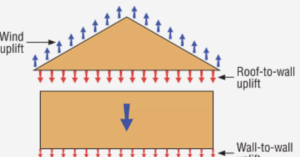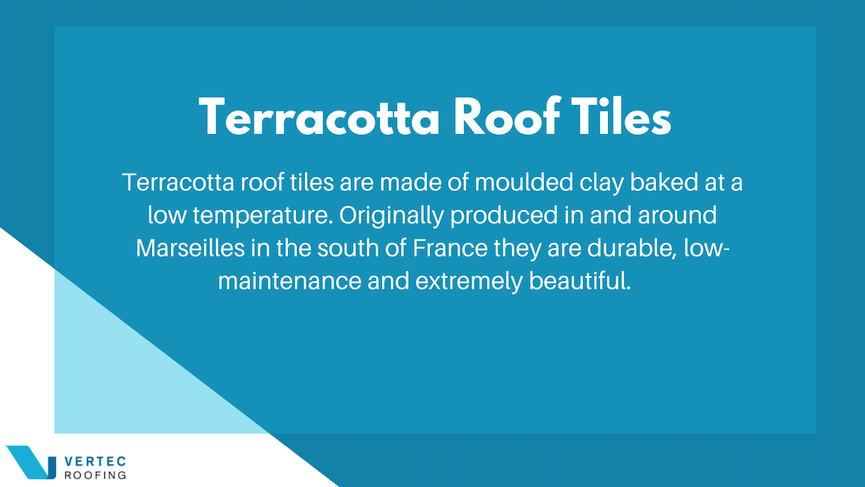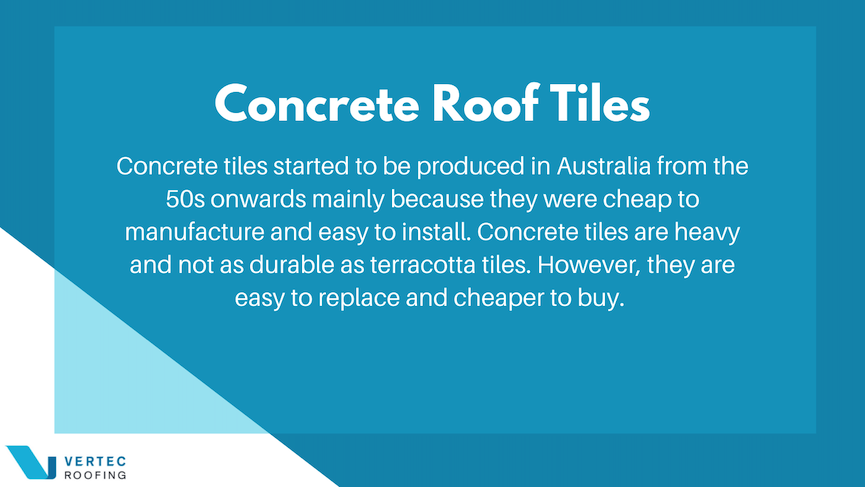

If you’re preparing to retile your roof and you’re debating whether terracotta vs cement roof tiles are better, you’re not alone. As Sydney’s leading roofing experts, we’re often asked about the pros and cons of various roof tiles at Vertec Roofing. With the benefit of over 20 year’s experience in tiling, retiling, and repairing roofs across Sydney and Canberra, we’re well equipped to answer all your roof tiling questions.
The truth is: every roof tile comes with advantages and disadvantages. Choosing the right roofing tiles will come down to a number of factors from the climate where you live, to the type of property, and how much you’re willing to spend on roofing materials. Keep reading for a full breakdown on terracotta vs cement roof tiles to assist you in choosing the right tile for your property.
Let’s start with terracotta:
Conjuring images of small Tuscan villages and grand Medieval castles, terracotta roof tiles have been popular across Europe and Asia for centuries. In many towns across the Mediterranean, terracotta tiles create beautifully uniform roofscapes in the distinctive warm orange shade we all know and love.

Originally manufactured in and around Marseilles in the south of France, the production of terracotta tiles in Australia took off after World War I as they became increasingly popular as a high-quality roofing material that is completely watertight, heat resistant and maintenance-free.
Modern terracotta tiles are available in a variety of styles, shapes, and colours. Terracotta tiles are formed from clay that has been baked at a low temperate and moulded. Although we often associate terracotta tiles with the warm brownish-orange colour common overseas, terracotta naturally varies in colour from the palest grey to deepest reddish black.
A note on the debate between ceramic vs terracotta roof tiles: while some people assume that ceramic tiles are the same as their terracotta cousins, they do in fact perform differently as roof tile materials. They are both made from clay, however; whereas terracotta tiles are baked at a very low temperature, ceramic tiles are fired at a high temperature of between 1000 – 1250 degrees creating an extremely hard a durable product mainly used in kitchens and bathrooms.
With concrete and cement often used interchangeably to describe roofing materials, the two are essentially the same thing. Concrete tiles were first produced in Australia from the 50s onwards, primarily because they are cheap to manufacture and easy to install. Material shortages and building restrictions after World War II meant that chimneys and exterior decorations were often done away with in favour of plainer styles that were more affordable. In this context, concrete tiles gained popularity as a chapter alternative to more traditional terracotta tiles or even corrugated metal roofing.
When weighing up the pros and cons of concrete roof tiles vs terracotta roof tiles, there are a range of factors that are relevant and should be considered carefully. Three of the main deciding factors are:
Concrete tiles are cheap to produce and buy at just $40-$60 a square metre on average, which is significantly lower than investing in terracotta roof tiles. Installation costs for concrete tiles are also low as they’re relatively easy to assemble and don’t require the skills of a specialist roofing company.
On the other hand, terracotta tiles will set you back by $80-$100 a square metre and are far more difficult to install. Installation of terracotta tiles usually needs to be handled by a specialist team who are familiar working with terracotta products, adding even more expense.

Concrete tiles have quite a short lifespan of about 50 years or so. Cement tiles are also extremely heavy and often roofing structures require reinforcing to provide long-term support. As a material, cement absorbs water at a higher rate than terracotta, increasing the likelihood of algae and mildew growth leading to the need for ongoing repairs in some cases.
Terracotta is a natural product that is low maintenance and extremely durable. Lasting for hundreds of years with only minor repairs necessary the longevity of terracotta is plainly seen on roofs the world over. However, terracotta tiles are not appropriate for cold areas, as they can crack and warp during the freezing and thawing process.
Cement tiles are easy to paint, making them available in an almost unlimited colour palette that can easily be adapted to your overall colour scheme. Cement tiles are also easy to maintain and are highly customisable over time. The natural beauty of terracotta tiles is undeniable, terracotta is eye-catching when initially installed and weathers beautifully over time. Eventually, terracotta tiles adopt a patina that only increases their visual appeal.
Servicing all of Sydney and Canberra, the expert team of roofing specialists at Vertec Roofing are a safe bet when you’re considering terracotta vs cement roof tiles. Get in touch with the team today to talk through your roof replacement requirements or to get an obligation-free quote.

At Vertec Roofing, we believe roofing is about protecting homes and enhancing comfort.
One Response
Hey Liam, great post! The Terracotta vs. Cement roof tiles debate is always an interesting one. Personally, I lean towards Terracotta because of its timeless look and natural appeal. However, I’m curious to hear more opinions from the community. What factors do you think make one better than the other? Durability, cost, aesthetics, or something else? Let’s start a friendly discussion and learn from each other’s experiences! ??️